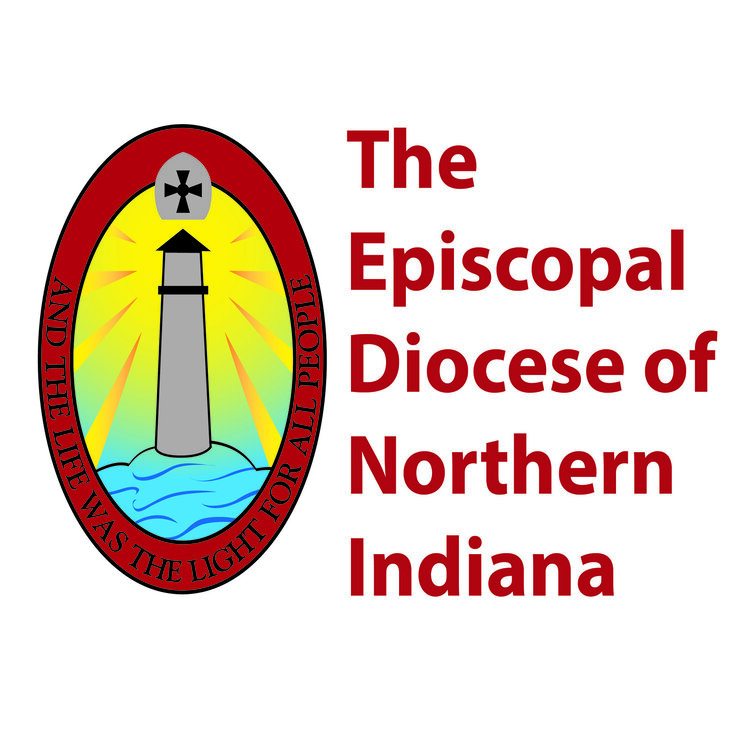Dear Brothers and Sisters,
As many of you know, I recently returned from a trip to Israel and the West Bank. The journey was partly “political” and included conversations with people on both sides of the tragic conflict that has engulfed that part of the world for decades. But it was also, once those conversations were done, a pilgrimage: an opportunity to hang around Jerusalem for six days and to pray at length in the holy places where key events of our faith occurred – the Pool of Bethesda (where Jesus healed the paralyzed man in John 5), Gethsemane, the Mount of Olives, the Cenacle (site of the Last Supper), the Church of the Holy Sepulchre (build over the place where Jesus died on the cross and, on Sunday, rose from the dead). I will always be grateful for the privilege of enjoying those leisurely and extended days, and in particular of praying for the Diocese of Northern Indiana and my beloved brothers and sisters with whom I share life and ministry.
The trip included a surprising highlight, one that I hadn’t anticipated. I managed to navigate the Jerusalem Light Rail. This may seem like a small matter, but for me it was a Really Big Deal. The rail system, a relatively recent addition to the city’s transportation network, stretches from one side of Jerusalem to the other. Whenever I’ve been in the city, I have looked longingly at its modern and fast-moving trains, and wondered what it would be like to use them. Finally, on the last day of my trip, I worked up my courage. I’d decided to take a trip out to Mt. Herzl in West Jerusalem, and realized that the light rail line took me directly there from a spot near my hotel. But the whole thing seemed . . . well, rather daunting. Israel is a tri-lingual country (Hebrew, Arabic, and English). Mass transit systems are geared to “locals,” people who know the territory and don’t need complicated directions – for commuters, not tourists. Could I manage to get to Mt. Herzl and back without disaster?
I found myself thinking about a little-known hymn in the Hymnal 1982. W. H. Auden, 20th Century Anglican poet, wrote the words, though (I must admit) the tunes provided in the hymnal are distressingly difficult, and thus the hymn is rarely sung. Here is the first stanza:
He is the Way.
Follow him through the Land of Unlikeness;
you will see rare beasts
and have unique adventures.
Auden is talking about discipleship, following Jesus in unfamiliar places, the “Land of Unlikeness”. True, there are no “rare beasts” on the Jerusalem Light Rail, and the adventures are relatively low-key: figuring out how to buy tickets on a machine whose instructions are in Hebrew (finally I discovered a button that translated the Hebrew into English, but the button was itself identified in Hebrew); listening to fast-paced announcements in three languages; holding onto a pole in the rail car as more and more commuters jammed in; trying to keep track of the stops, counting one by one, so that I’d know where to get off. There’s something faintly disturbing about navigating a light rail system – which reminded me that there’s something more-than-faintly disturbing about following Jesus. He takes us to places we don’t expect. He puts us at risk. “[Jesus and the disciples] were on the road, going up to Jerusalem, and Jesus was walking ahead of them; they were amazed, and those who followed were afraid” (Mark 10:32). That was the experience of the first disciples and, in our own small our way, our own experience.
And so the “take away” of my journey on the Jerusalem Light Rail is this: What is Jesus asking us to navigate? What new adventures? To whom is he sending us? Who are the people he is bringing into our lives? There is something about uncharted territory (whether literal or spiritual) that at once unsettles and challenges us. Whatever our own equivalent of an unfamiliar transit system, may we dare to get on – and see where Jesus leads us.
With blessings for a refreshing and renewing summer –
Yours in Christ,
+Ed
